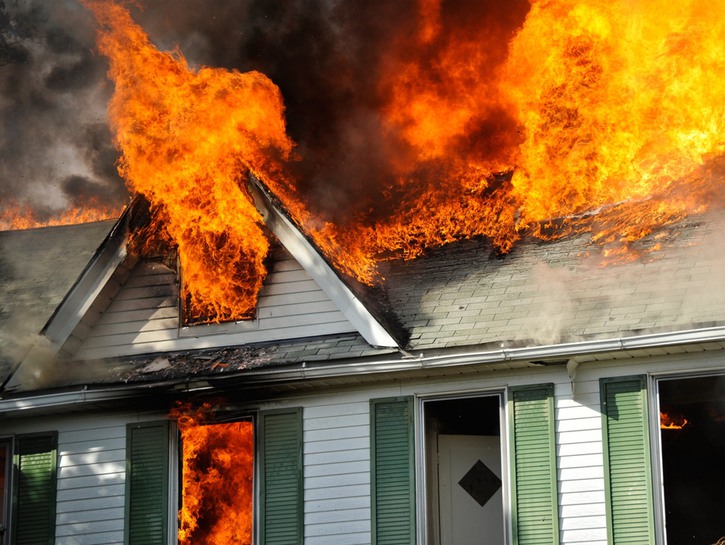Unattended cookware, candles, and appliances are just a few of the things that can cause a house fire, and the flames can spread before you’ve even had time to process what’s going on. There are many myths about house fires out there, but we’re here to fill you in on the facts. The truth might just save your life and your precious belongings.
Myth: The Smell Of Smoke Will Wake You Up

When it comes right down to it, the smell of smoke isn’t enough to alert you to danger in the middle of the night. Not only will it not wake you, but smoke can also cause immediate damage to your airways and lungs when inhaled. Smoke is mostly made up of soot and chemicals like dioxins or nitrogen oxide. Even just inhaling it for a few minutes can cause irritation to your eyes, difficulty breathing, and nausea.
Make sure you have working smoke detectors, since they will alert you of a fire while there’s still time for you and your loved ones to extinguish it or escape.
Myth: You Have Minutes To Escape

As nice as it is to believe you have that much time, the reality is that a fire can spread in seconds. In just one or two minutes, it can fill an entire home with thick black smoke that’s tough to see through and dangerous to inhale.
Come up with a fire escape plan with your loved ones to ensure everyone gets out in time.
Myth: Flames Cause The Most Casualties

While the flames are enough to worry about, they’re not the biggest threat when a fire breaks out. As we mentioned earlier, smoke causes much more damage than you’d think. Smoke can fill an entire home in a very short time, and the chemicals can irritate your skin and eyes and even cause you to become unconscious.
It’s imperative that you have working smoke detectors and that you stay below the smoke line when escaping a house fire. Keep low to the ground where the air is cleaner to safely exit your home.
Myth: New Homes Are Safer Than Older Ones

You might think that older homes are more susceptible to fires because of faulty wiring or aging technology. Newer homes are surely safer, right? Quite the opposite, actually. Newer homes are built using materials like engineered lumber, synthetic materials, and lightweight wood that are less fire-resistant than the materials used to build many older homes.
Don’t assume your new home is fireproof. Take the same precautions you would with an older home.
Myth: Leaving Flammable Items Unattended Is Okay

It may not seem like a big deal to leave candles burning while you run an errand or to abandon cookware on the stove, but it’s terribly unsafe. With all the flammable objects already present in your home, there’s no need to tempt fate by turning your back on burning items. A small candle can cause a large fire in less than a minute, and cookware can cause a grease fire, which requires a separate extinguishing method.
Always monitor your candles and cookware. It’s better to be safe than sorry.
Myth: Kids Will Instinctively Escape A Fire

While it’s true that children will flee a fire, the odds of them actually escaping the house without an escort or plan are slim. Kids run to familiar safe zones when they’re frightened and will typically seek shelter in their closets or under their beds.
Go over fire safety tips with your children every month or two. It’s important that they are aware of the location of safe zones and know how to escape the home in case of a fire. Children are curious and act out of impulse, so be sure to tell them never to run back into the house for anything.

Fires are scary and can spread in the blink of an eye. It’s important to keep your home as safe as possible and speak with young ones about the importance of an escape plan. You don’t need to live your life in constant fear of a fire, but don’t ignore these life-saving tips.
